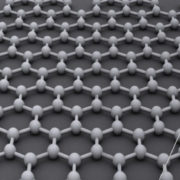The 7 best eco friendly materials for building
With the inevitability of declining fossil fuels, and the threat of global climate change, reducing our energy consumption is an essential survival strategy.
Choosing to build green saves energy. The low embodied energy of green products ensures that very little energy went into their manufacture and production, with a direct reduction in carbon emissions. Eco friendly design methodology can further reduce energy consumption by minimising energy inputs for heating, cooling and light, and incorporating energy efficient appliances. Saving energy for the occupant also saves money – an issue that will become increasingly important as the cost of fossil fuels inevitably rises in the near future.
The most eco friendly construction materials for a home are as follows:
Recycled Steel
Utilises steel already in existence for structural use in a home. The reclaimed steel from 6 junk cars provides enough recycled steel to build a 2000 square for home. Recycling saves 75% of the energy costs. Steel is the most recycled material in the world and recycled steel is used in the manufacture of all new steel.
Bamboo
Bamboo is increasing in popularity as a building material. Bamboo is very sustainable since it grows quickly. While trees such as pine and cedar can be reforested, growing them can take years. Bamboo can be reforested much more promptly and grows throughout the world. Bamboo, like true wood, is a natural composite material with a high strength-to-weight ratio useful for structures. Bamboo has a higher compressive strength than wood, brick or concrete and a tensile strength that rivals steel.
Sheep’s Wool
Sheep’s wool, of course, can also be regrown quickly. After shearing, sheep inherently produce a new crop. Clothing manufacturers have long-known the insulating properties of wool, which make very cozy sweaters and socks. The same insulating features can make sheep’s wool an energy-efficient insulator in walls, ceilings and attics. Sheep Wool Insulation is totally natural, environmentally friendly, and quick and easy to install. Wool insulation and other eco-friendly products appeal to the growing numbers of home owners and buyers looking for green buildings with an excellent energy rating.
Straw Bales
Straw bales also have fantastic insulating properties. Straw bales are placed in walls, attics and ceilings to contribute to cooler temperatures in the summer and warmer temperatures in the winter. Straw can be harvested and re-planted easily with minimal environmental impact. The making of straw into bales also has a very low influence. Research has shown that straw-bale construction is a sustainable method for building, from the standpoint of both materials and energy needed for heating and cooling.
Precast Concrete
Concrete is a natural material that can be recycled, making it an appropriate choice for eco-friendly homes. Pre-cast concrete is eco-friendlier than concrete poured on site. It is poured into pre-made molds over rebar or wire, then cured. Once the concrete has hardened, it can be shipped and placed into multiple structures. As a result, precast concrete achieves economies of scale that concrete which is poured on-site cannot.
Reclaimed or Recycled Wood
Reclaimed or recycled wood has much less of an environmental impact than harvesting new timber. Since many homes and other structures have used wood for several years, it’s relatively easy to reclaim those structures for new home building. Wood can be used in the construction of a home — reclaimed and recycled wood can also be used to make unique floors or exposed beams with an antique look.
Earth
Many cultures throughout the centuries have used earth for building. Homes built of earth are warm in the winter and cool in the summer. While earth homes are frequently produced in China and parts of South America, they are far less prevalent in the United Kingdom.
Plant-Based Polyurethane Rigid Foam
Rigid foam is often used as insulation material in building. It’s made from kelp, hemp and bamboo. Because it is rigid — and relatively immovable — it can be used in insulation. It offers protection against mold and pests, as well as sound insulation and heat resistance.
There are many good reasons why we should use eco-friendly construction methods and materials. It can improve the health of our planet, and the health of our own lives. It also supports local business and helps strengthen the local economy, which in turn helps to build our communities into vibrant, prosperous and desirable places to live
Source: motherearthnews.com / Tata Steel Europe / Sheep Wool Insulation / Wikipedia /












Leave a Reply
Want to join the discussion?Feel free to contribute!